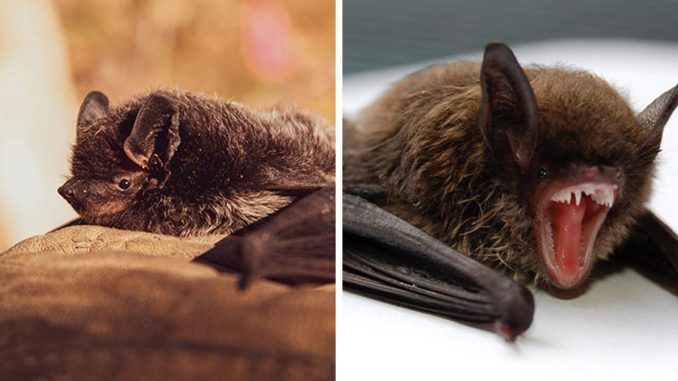
Bats are one of those species that particularly stand out, not just because they are the only mammals that can fly, but also because their 1,400-and-a-few species, found in nearly every corner of the planet, are continuously studied for their exceptional qualities.
As it turns out, bats have newly discovered unique traits; some of their species can mate without penetration, a practice that has never been seen before in other mammals.
The species in question, the serotine bats, also known by the scientific name Eptesicus serotinus, seemingly mate by simply touching genitals.
Some bat species can mate without penetration, a practice that has never been seen before in other mammals
Image credits: Todd Cravens/Unplash
According to a study published last week (November 20), in the journal Current Biology, male serotine bats use their penis more like an arm to move a protective membrane away from the female bat’s vulva.
Nicolas Fasel, the study’s coauthor and a bat specialist at the University of Lausanne in Switzerland, revealed that bats have “incredible” reproductive biology that has been difficult to study given the nocturnal and secretive nature of many bat species.
He said: “Most of the time you’ll see their backs on the wall, and you don’t see what’s really happening in front.
As a result of the efforts of a Dutch bat enthusiast who reportedly set up 18 video cameras in a church in the Netherlands that has been housing a colony of serotine bats, Nicolas and his colleagues were able to analyze 93 mating events in detail.
Four additional mating events were further captured on camera, featuring the same species that came from collaborators at a bat rescue and rehabilitation center in Ukraine.
Nicolas explained: “You can really see the copulation and see that the penis is not going inside.”
The bat researchers revealed that the footage collected displayed that half of the mating episodes lasted less than 53 minutes, while on one occasion a couple of bats stayed together in a copulative embrace for more than 12 hours.
“You can really see the copulation and see that the penis is not going inside,” a scientist explained
Image credits: Wikimedia Commons
The footage may have proven itself as a revolutionary observance, solving many speculations scientists have had about the reproductive biology of this species of bat and others in the same family.
The study stated that the male bat’s penis is around seven times longer than its female counterpart’s vagina, and it has a heart-shaped head that is seven times wider than the vaginal opening.
Subsequently, Nicolas believes that such anatomy makes penetrative sex difficult, if not impossible.
Teri Orr, an assistant professor and specialist in bat reproductive systems at New Mexico State University who was not involved with the study, reportedly said she was initially “astonished” to see that males may be using their genitalia as a “copulatory arm” and “maybe transferring sperm much as birds do.”
She told CNN: “Bats use their uropatagia (tail membranes) in many unique ways such as fishing nets, to catch pups during birth and so forth and thus they are useful in many ways but perhaps an impediment during mating.
“I agree that the male of this species may use his genitalia to navigate the female’s tail but there are some key things to be sorted out.
“For one: how is the sperm transferred exactly, and for another, what is the female doing in this pair?”
Serotine bats can stay together in a copulative embrace for more than 12 hours
Image credits: Hitchhike/Pexels
Alan Dixson, a biology professor at the Victoria University of Wellington in New Zealand and the author of the 2021 book “Mammalian Sexuality: The Act of Mating and the Evolution of Reproduction”, told the American broadcaster that the behavior of the serotine bat reported in the paper is “bizarre and unique” if true.
Alan, who was also not part of the study, reportedly believed that the researchers didn’t provide enough evidence to support their unusual claim.
Susanne Holtze, a senior scientist at the Leibniz Institute for Zoo and Wildlife Research in Berlin and the study’s coauthor acknowledged that the group of scientists had not been able to definitively prove the transfer of sperm from male to female bats, but affirmed it would become a future focus while researching.
She said: “It’s a bit of an open question how their semen really gets into the female reproductive tract.
“It might be that there’s a kind of suction involved.
“We cannot fully answer this mechanism,” she said.
Susanne additionally stated: “There are more than 1,000 species of bats, and many of them are also endangered.
“So far, no sufficient strategy for assisted reproduction has been established.”
The study stated that the male bat’s penis is around seven times longer than its female counterpart’s vagina
Image credits: Denley Photography/Unplash
Meanwhile, Teri revealed that the study would inform her lab’s work on bat reproduction and whether the unusual reproductive behavior has any implications for understanding human infertility.
She explained: “Bats do a lot of extreme things during reproduction from storing sperm to extending the duration of a pregnancy.”
